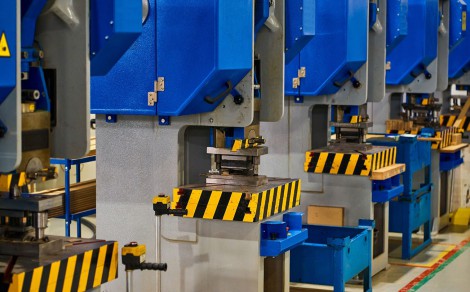- Home » Editorial » Hydraulics
Upgrading a linear servo press: hydraulic to electric

For all but the very highest force requirements, electric servo presses provide numerous advantages over their historic, hydraulic counterparts. The actuator is integral to press capability, as well as production quality, and levels of productivity, making its specification central to electric servo press design.
Gerard Bush, Engineer at INMOCO, discusses the motion requirements for linear servo press design.
For applications ranging from microelectronics assembly, through to metal bending and forming, presses remain vital industrial tools. Traditionally hydraulically driven, these days, an electric servo press, such as those developed by Tolomatic, can generate force up to 50 tons, or 100 tons in a dual actuator configuration, enabling an electric system to handle all but the highest force requirements.
Often, the primary reason to choose an electric servo press is that it can achieve significantly higher precision, optimising performance by following programmed motion profiles. Combined with continuous monitoring of ram force, speed, and position for real-time adjustment, this adds high accuracy and repeatability. Greater flexibility over motion profiles can also be achieved, and digital actuation enables easier integration into factory automation systems, as well as meeting modern safety protocols.
Electric actuation also makes operation of a press more energy efficient – up to 70% more compared to hydraulics. With fewer mechanical components, electric systems are also more reliable, increasing productivity. With the elimination of fluid leaks, material contamination, and environmental risks, electric servo presses are also significantly quieter.
Motion requirements
A linear servo press is the optimum choice compared to a rotary motion approach as the design removes the inefficiencies of rotary-to-linear linkages. This enables the press to exert higher force with greater precision – also making it more efficient and reliable. This design utilises a direct-drive linear actuator, with a servo motor directly driving a screw mechanism, converting torque into a linear force. The press fixture itself is typically coupled directly to the thrust rod end of the screw assembly.
The role of the actuators is vital, and the fundamental consideration is meeting the force and load requirements. This is based on the type and extent of deformation required, as well as material considerations such as hardness, density, thickness, plus variables such as welded seams. These general properties impact the required press tonnage, as well as the levels of force and stroke.
Actuator selection requires sufficient force to handle the maximum load requirements while ensuring accuracy in control, and a new press design should be sized to meet this. In the case of a hydraulic retrofit, however, like-for-like specification is tempting, but this can lead to oversizing. To ensure accurate specification, designers should determine the true peak and continuous working force of the hydraulic cylinder by recording values during operation. Even a pressure estimation within 15 per cent of the actual force will provide a reasonable range. However, beware underestimating the requirements of the duty cycles, which could work the system too hard and present performance issues or lead to maintenance challenges.
-
PPMA 2025
23 September, 2025, 9:30 - 25 September, 2025, 16:00
NEC, Birmingham UK -
Advanced Engineering Show 2025
29 October, 2025, 9:00 - 30 October, 2025, 16:00
NEC, Birmingham UK










